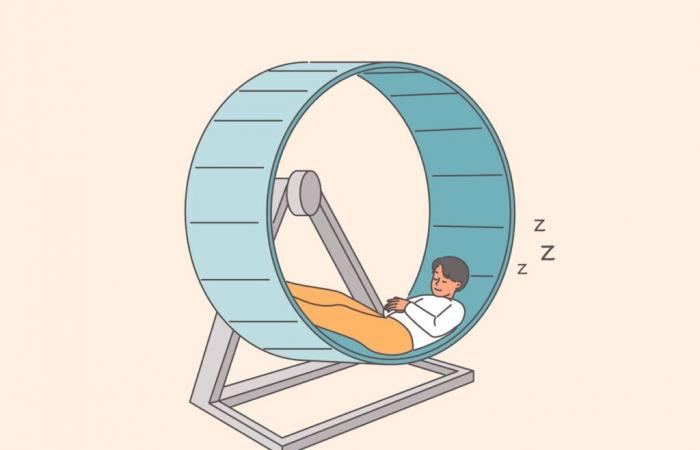Can you really earn more on benefits than by working? Certainly not, say 2 researchers who, calculators in hand, demonstrate Economic Alternativesthat, even if work is always more remunerative than assistance, it does not always allow people to escape poverty. They therefore carry out calculations using the example of a single person who, without work, receives €851 in social benefits. This amount puts it at 39% of the median standard of living, or slightly below the extreme poverty line (which is set at 40% of the median standard of living).
However, by working on the minimum wage, with a net salary of €1,399 as well as the activity bonus of €258, she largely escapes poverty by earning €1,657. On the other hand, the following calculations reveal that, if this same person still on the minimum wage has a dependent family, this family is well below the poverty line. So, work alone does not always allow you to escape poverty.
Likewise, the minimum wage alone (Smic) does not allow one to escape poverty. First of all, we must remember what we mean by poverty. In France, a person is considered poor when their income is below a certain percentage of the median income (i.e. the amount with which half of the population receives less, and the other half more). In 2022, according to INSEE figures, the median income was €2,028 (in other words, 50% of the population lives on less). The poverty threshold varies depending on whether it is set at 40, 50 or 60% of the median income.
So, still according to the figures for 2022, it is set at €811, €1,014 or €1,216. The net minimum wage was €1,399 until October 31, 2024 (it has since been increased to €1,426.30). For Anne Brunner, director of studies at the Observatory of Inequalities, social benefits alone do not allow us to live better than by working. “ The active solidarity income (RSA), for example, is well below the poverty line and the minimum wage. » Remember that the RSA is €559, well below the median standard of living of poor people, set by INSEE at €831.
Between non-recourse and precarious jobs
When we talk about social benefits, there is a subject that very often goes under the radar in public debate: that of non-take-up. There being no tool to measure it precisely, it is difficult to establish a precise figure, but numerous studies and reports have estimated it at around 40%. As for the RSA specifically, a 2022 report from the Directorate of Research, Studies and Statistics (Dress) estimated that in 2018, 34% (a third) of eligible households did not claim it each quarter, and 20% (one in 5), do not claim it for three consecutive quarters. Drees calculates the sums not paid because they are not claimed at 750 million euros per quarter.
Another aspect neglected in the public debate when we talk about the dichotomy between work and social assistance: precarious jobs. According to the Society's Observatory Center, in 2023, 16% of employees have a precarious status (including fixed-term contracts, apprenticeships, or temporary contracts), a figure twice its level in the 1980s. Particularly marked precariousness for those under 25, linked, in large part, to an increase in employment contracts. learning. According to the Department of Research Animation, Studies and Statistics (Dares), the unemployment figures for the 3rd quarter of 2024 demonstrate that the number of category B registrants (in short reduced activity) having worked increased by 3.2% compared to the previous quarter. Temporary or part-time contracts which are not always a choice: according to figures from the Observatory of Inequalities in 2022, 27% of part-time people (i.e. 1.4 million people) would like to work more . Women represent ¾ of imposed part-time work. Anne Brunner notes this: “ Precarious jobs are not decreasing ».
What solutions?
According to Drees, in 2022, 17% of RSA beneficiaries have a job, 68% of them salaried, 34% self-employed. Far from the image of the profiteer who lives off the work of others, these figures corroborate the idea that some jobs are far too precarious to be able to make a living from them. To escape the vicious circle of poverty, the Observatory of Inequalities recommends, first of all, opening “ the RSA for 18-25 year olds who no longer live with their parents, and to increase its amount to allow standardization of social minimums for all », as Anne Brunner explains. She states: “ France has the means to support reviews up to €1,000 (i.e. 50% of the poverty line) “, so there is no reason why this should not be the case, she criticizes. To those who say that social benefits should be reduced or even eliminated, she responds: “ If there were no social benefits, there would be millions of people on the streets. »
Contrary to the harshness of certain speeches, the barometer of the Ministry of Solidarity, in 2023, affirms that 80% of French people were concerned about poverty, and half (50%) think that the public authorities “ don't do enough » for the most deprived. Asked about Prime Minister Michel Barnier's proposal, in 2022, to merge allocations, Anne Brunner thinks thatsimplification would be welcome to combat the complexity of procedures : “people with lower resources have situations that are constantly changing and are constantly required to account for these changes “, which can result in a fear of making a mistake and having to repay benefits. Mechanisms such as solidarity at source, tested in several departments, would be one way to combat non-recourse.






